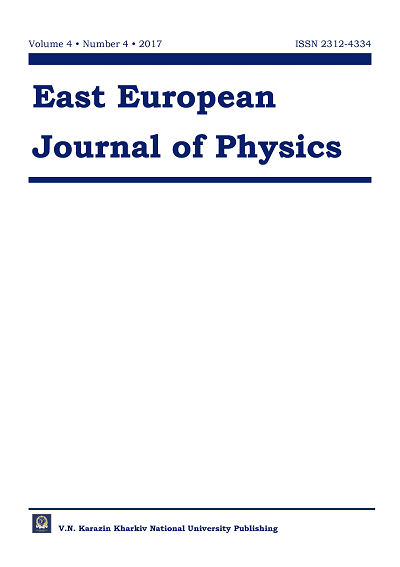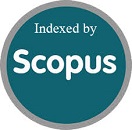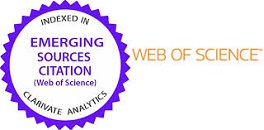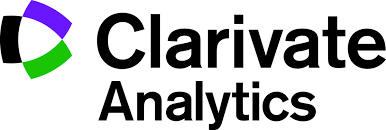CURRENT GAIN IN UNIPOLAR PULSED DISCHARGE IN LOW-PRESSURE CARBON DIOXIDE
Abstract
An unipolar low-pressure pulsed discharge (0.1-0.5 Torr) in CO2 has been investigated in the frequency range 20–200 kHz with duty cycle of 0.1 to 0.85 and voltage amplitude of 600–1000 V. It was found that the current gain phenomenon, observed earlier in the mid-frequency pulsed discharges in other gases, also occurs for a discharge in CO2 with the gain of 1–2. The gain factor decreases with the discharge current growth, both due to increase of the voltage amplitude and due to increase of carbon dioxide pressure. It is shown that the shape of the oscillogram of the pulsed discharge current is determined primarily by the duration of the plasma phase and is almost independent on the duration of the afterglow phase. A physical mechanism of the phenomenon of current gain in a pulsed discharge is discussed. It is concluded that the most important factor in this mechanism is the heating of the gas in the discharge gap during the plasma phase of the discharge, which leads to depletion of neutral gas molecule concentration and, as a consequence, to ionization rate decrease.
Downloads
References
2. Efimova V.V., Voronov M.V., Hoffmann V., Eckert J. Electrical Properties of Pulsed Glow Discharge Two New Aspects // Proc. Meeting "Glimmentladungs-Spektroskopie", Berlin, 2008. – P. 27–31.
3. Voronov M., Smıd P., Hoffmann V., Hofmann Th., Venzago C. Microsecond pulsed glow discharge in fast flow Grimm type sources for mass spectrometry // J. Anal. At. Spectrom. – 2010. – Vol. 25. – P. 511–518.
4. Voronov M., Hoffmann V., Buscher W., Engelhard C., Rayc S. J., Hieftje G. M. Pressure waves generated in a Grimm-type pulsed glow discharge source and their influence on discharge parameters // J. Anal. At. Spectrom. – 2011. – Vol. 26. – P. 811‑815.
5. Efimova V., Hoffmann V., Eckert J. Electrical properties of the ms pulsed glow discharge in a Grimm-type source: comparison of DC and RF modes // J. Anal. At. Spectrom. – 2011. – Vol. 26. – P. 784–791.
6. Voronov M., Hoffmann V., Buscher W., Engelhard C., Rayc S.J., Hieftje G.M. Thermal mechanism for formation of electrical prepeak and pressure waves in a microsecond direct current pulsed glow discharge with a Grimm-type source: a modeling investigation // J. Anal. At. Spectrom. – 2012. – Vol. 27. – P. 1225–1233.
7. Gamez G., Bogaerts A., Hieftje G. M. Temporal and spatially resolved laser-scattering plasma diagnostics for the characterization of a ms-pulsed glow discharge // J. Anal. At. Spectrom. – 2006. – Vol. 21. – P. 350–359.
8. Lisovskiy V.A., Ogloblina P.A., Dudin S.V., Yegorenkov V.D., Dakhov A.N. Forming a unipolar pulsed discharge in nitrogen // Problems of atomic science and technology. – 2016. – No.6. – P. 227–230.
9. Lisovskiy V.A., Ogloblina P.A., Dudin S.V., Yegorenkov V.D., Dakhov A.N., Farenik V.I. Formation stages of pulsed discharge in oxygen and carbon tetrafluoride // Journal of Surface Physics and Engineering. – 2016. – Vol. 1. – No. 4. – P. 351‑360.
10. Lisovskiy V.A., Ogloblina P.A., Dudin S.V., Yegorenkov V.D., Dakhov A.N. Current gain of a pulsed dc discharge in low-pressure gases // Vacuum. – 2017. – Vol.145. – P. 194–202.
11. Berenguer Ch., Katsonis K. Global Modeling of CO2 Discharges with Aerospace Applications // Advances in Aerospace Engineering. – 2014. – Article ID 847097. – 17p.
12. Kozak T., Bogaerts A. Splitting of CO2 by vibrational excitation in non-equilibrium plasmas: a reaction kinetics model // Plasma Sources Sci. Technol. – 2014. – Vol.23. – No.4. – P. 045004.
13. De Bie Ch., van Dijk J., Bogaerts A. The Dominant Pathways for the Conversion of Methane into Oxygenates and Syngas in an Atmospheric Pressure Dielectric Barrier Discharge // J. Phys. Chem. C. – 2015. – Vol. 119. – P. 22331−22350.
14. Bogaerts A., Kozak T., van Laer K., Snoeckx R. Plasma-based conversion of CO2: current status and future challenges // Faraday Discuss. – 2015. – Vol. 183. – P. 217–232.
15. Van Rooij G.J., van den Bekerom D.C.M., den Harder N., Minea T., Berden G., Bongers W.A., Engeln R., Graswinckel M.F., Zoethout E., van de Sanden M.C.M. Taming microwave plasma to beat thermodynamics in CO2 dissociation // Faraday Discuss. – 2015. – 16 p. (DOI: 10.1039/c5fd00045a).
16. Aerts R., Somers W., Bogaerts A. Carbon Dioxide Splitting in a Dielectric Barrier Discharge Plasma: A Combined Experimental and Computational Study // ChemSusChem. – 2015. – Vol. 8. – P. 702 – 716.
17. Snoeckx R., Heijkers S., Van Wesenbeeck K., Lenaerts S., Bogaerts A. CO2 conversion in a dielectric barrier discharge plasma: N2 in the mix as a helping hand or problematic impurity? // Energy Environ. Sci. – 2016. – Vol.9. – P. 999–1011.
18. Guerra V., Silva T., Ogloblina P., Grofulović M., Terraz L., da Silva M.L., Pintassilgo C.D., Alves L.L., Guaitella O. The case for in situ resource utilisation for oxygen production on Mars by nonequilibrium plasmas // Plasma Sources Sci. Technol. – 2017. – Vol.26. – P. 11LT01.
19. Diver D.A. A plasma formulary for physics, technology and astrophysics. – Berlin: Wiley, 2001. – 207 p.
20. Berenguer Ch., Katsonis K. Global Modeling of CO2 Discharges with Aerospace Applications // Advances in Aerospace Engineering. – 2014. – P. 847097.
21. Massey H. Negative ions. – London: Cambridge University Press, 1976. – 754 p.
22. Schulz G.J. Cross sections and electron affinity for O– ions from O2, CO, and CO2 by electron impact // Phys. Rev. – 1962. – Vol. 128. – No. 1. – P. 178–186.
23. Raizer Yu.P. Gas discharge physics. – Berlin: Springer, 1991. – 449 p.
24. Martin A., Bordel N., Pereiro R., Bogaerts A. Monte Carlo analysis of the electron thermalization process in the afterglow of a microsecond dc pulsed glow discharge // Spectrochimica Acta, Part B. – 2008. – Vol.63. – P.1274–1282.
25. Lisovskiy V., Yegorenkov V. Ambipolar diffusion in strongly electronegative plasma // Europhysics Letters. – 2012. – Vol.99. – No.3. – P. 35002 (1-5).
26. Thompson J.B. Negative Ions in the Positive Column of the Oxygen Discharge // Proc. Phys. Soc. – 1959. – Vol.73, No.5. – P. 818–821.
27. Lichtenberg A.J., Vahedi V., Lieberman M.A., Rognlien T. Modeling electronegative plasma discharges // J. Appl. Phys. – 1994. – Vol.75, No.5. – p. 2339–2347.
28. Grofulović M., Alves L.L., Guerra V. Electron-neutral scattering cross sections for CO2: a complete and consistent set and an assessment of dissociation // J. Phys. D: Appl. Phys. – 2016. – Vol.
49. – P. 395207.
29. Schultz G., Charpak G., Sauli F. Mobilities of positive ions in some gas mixtures used in proportional and drift chambers // Revue de Physique Appliquee. – 1977. – Vol. 12. – No. 1. – P. 67–70.
30. Saporoschenko M. Drift Velocities of O+, CO+, and CO2+ Ions in CO2 Gas // Phys. Rev. A. – 1973. – Vol.8. – No.2. – P. 1044‑1047.
31. McKnight L.G. Drift velocities and interactions of negative ions in oxygen // Phys. Rev. A. – 1970. – Vol. 2. – No. 3. – P. 762‑770.
32. Snuggs R.M., Volz D.J., Schummers J.H., Martin D.W., McDaniel E.W. Mobilities and longitudinal diffusion coefficients of mass-identified potassium ions and positive and negative oxygen ions in oxygen // Phys. Rev. A. – 1971. – Vol. 3. – No. 1. – P. 477–487.
33. Seiersen K., Al-Khalili A., Heber O., Jensen M.J., Nielsen I.B., Pedersen H.B., Safvan C.P., Andersen L.H. Dissociative recombination of the cation and dication of CO2 // Phys. Rev.A. – 2003. – Vol. 68. – No.2. – P. 022708.
34. Mesyats G.A., Osipov V.V., Tarasenko V.F. Pulsed Gas Lasers. – Bellingham, WA: Opt. Eng. Press, 1995. – 272 p.
35. Bekefi J. Principles of laser plasma. – New York: Wiley, 1976. – 416p.
36. Moseley J.T., Abertha W., Peterson J.R. Two-body mutual neutralization rates of O2+ + O–, NO+ + O–, and Na+ + O– obtained with merged beams // J. Geophysical Research. – 1972. –
Vol.77. – No.1. – P. 255–259.
37. Smith K., Thomson R.M. Computer modeling of gas lasers. – New York: Plenum Press, 1978. – 515 p.
Citations
DC GAS BREAKDOWN AND TOWNSEND DISCHARGE IN CO2
Lisovskiy V.A., Dudin S.V., Platonov P.P. & Yegorenkov V.D. (2020) Problems of Atomic Science and Technology
Crossref
STUDYING CO₂ CONVERSION IN DC GLOW DISCHARGE
Lisovskiy V.A., Dudin S.V., Platonov P.P. & Yegorenkov V.D. (2020) Problems of Atomic Science and Technology
Crossref
Authors who publish with this journal agree to the following terms:
- Authors retain copyright and grant the journal right of first publication with the work simultaneously licensed under a Creative Commons Attribution License that allows others to share the work with an acknowledgment of the work's authorship and initial publication in this journal.
- Authors are able to enter into separate, additional contractual arrangements for the non-exclusive distribution of the journal's published version of the work (e.g., post it to an institutional repository or publish it in a book), with an acknowledgment of its initial publication in this journal.
- Authors are permitted and encouraged to post their work online (e.g., in institutional repositories or on their website) prior to and during the submission process, as it can lead to productive exchanges, as well as earlier and greater citation of published work (See The Effect of Open Access).








